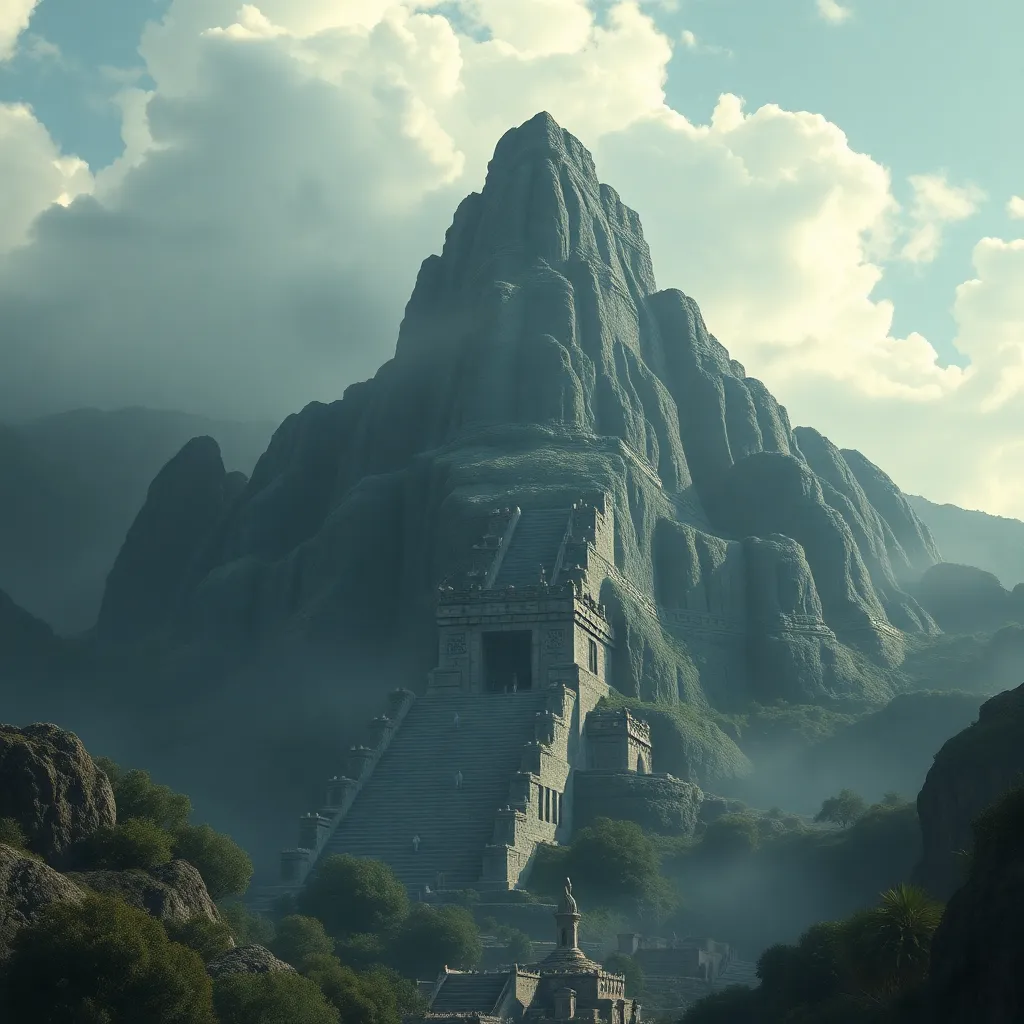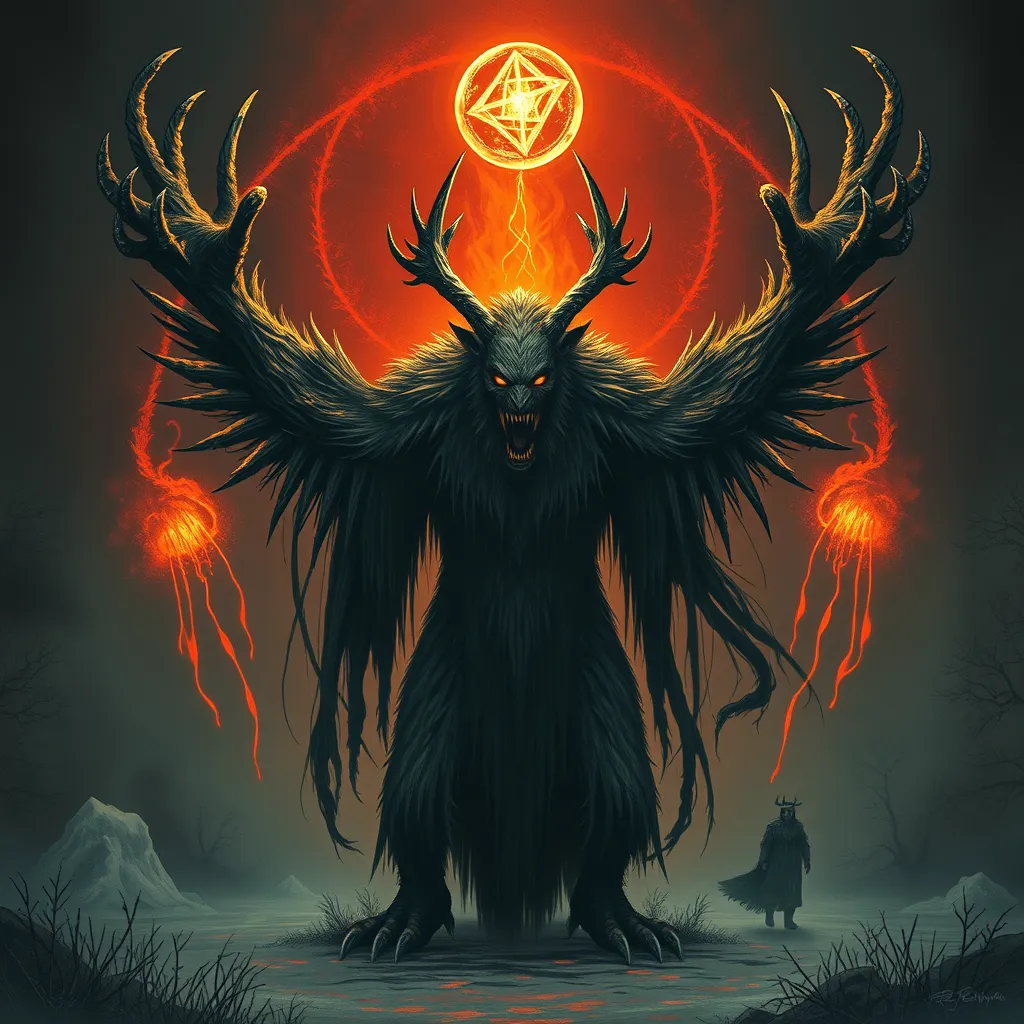The Sacred Mountain: Coatlicue’s Association with the Mythological Origin of the World
I. Introduction
Coatlicue is a central figure in Aztec mythology, revered as the mother of gods and a powerful entity embodying both creation and destruction. She represents the complexities of life, death, and rebirth, making her a vital part of Aztec cosmology. Sacred mountains hold immense importance in Mesoamerican cultures, serving as sites of worship, creation, and divine encounters. This article aims to explore Coatlicue’s role in the mythological origin of the world, particularly through her association with sacred mountains.
II. The Significance of Sacred Mountains in Mesoamerican Beliefs
Sacred mountains are defined as elevated landforms that hold spiritual significance and are often considered portals between the earthly and the divine. These mountains are characterized by their formidable presence, natural beauty, and often their challenging terrain, which symbolizes the arduous journey of life and the quest for enlightenment.
- Symbolism of Mountains: In Aztec and broader Mesoamerican cosmology, mountains symbolize stability, longevity, and the axis mundi, or the center of the universe.
- Sacred Sites: Mountains are frequently the sites of temples and rituals, believed to be the dwelling places of gods.
Examples of sacred mountains in Mesoamerican cultures include:
- Coatepec: The mountain associated with Coatlicue, symbolizing her role in creation and the birth of gods.
- Popocatépetl: A volcano that holds a prominent place in both mythology and geography.
- Mount Tlaloc: Linked to the rain god and agricultural fertility.
III. Coatlicue: The Mother of Gods
Coatlicue, often depicted with a skirt made of serpents and a necklace of human hearts, is a multifaceted deity representing motherhood, fertility, and the earth. Her name translates to “Snakes Her Skirt,” reflecting her deep connection to the earth and life cycles.
In Aztec mythology, Coatlicue is the mother of several important deities, including:
- Huitzilopochtli: The god of war and the sun, who played a crucial role in the Aztec pantheon.
- Tonantzin: A goddess associated with earth and fertility.
The duality of Coatlicue’s nature as both creator and destroyer emphasizes the balance of life and death, showcasing her as a nurturing mother and a fierce protector of the cosmos.
IV. The Myth of Coatlicue and the Birth of Huitzilopochtli
The myth surrounding Coatlicue’s pregnancy is rich and complex, highlighting her divine nature and the cosmic events surrounding the birth of Huitzilopochtli. According to the legend, Coatlicue became pregnant after a ball of feathers fell from the sky, representing the union of celestial and earthly elements.
The significance of this myth lies in:
- Celestial and Earthly Elements: The interplay between these realms underscores the interconnectedness of the universe.
- Her Other Children: Coatlicue’s other children, the Centzon Huitznahuas (the Southern Stars), were initially jealous of Huitzilopochtli, leading to conflict and ultimately his ascendance as a powerful deity.
This narrative illustrates the themes of conflict, rebirth, and the establishment of order in the cosmos.
V. The Sacred Mountain as a Site of Creation
Coatepec, the sacred mountain associated with Coatlicue, plays a significant role in the creation myth. It is viewed as the birthplace of Huitzilopochtli and symbolizes the meeting point of the divine and earthly realms.
- Creation and Rebirth: The mountain embodies the cycles of life, death, and rebirth, reflecting the agricultural cycles vital to Mesoamerican cultures.
- Cosmic Significance: Coatepec serves as a physical representation of the axis mundi, where the heavens and the earth meet.
This relationship emphasizes Coatlicue’s role as a central figure in the ongoing process of creation within the Aztec worldview.
VI. The Rituals and Ceremonies Associated with Coatlicue
In Aztec society, rituals dedicated to Coatlicue were integral to religious practices, reinforcing community identity and cosmological beliefs. These rituals often took place at sacred sites, especially those associated with mountains.
- Offerings: Devotees would present offerings, such as food, flowers, and even human sacrifices, to appease Coatlicue and ensure fertility and protection.
- Festivals: Various festivals were held in her honor, celebrating the cycles of nature and the agricultural calendar.
These practices not only honored Coatlicue but also reinforced the community’s connection to the sacred mountain, fostering a sense of identity and belonging.
VII. The Legacy of Coatlicue in Contemporary Culture
The influence of Coatlicue extends beyond ancient Aztec culture into modern Mesoamerican spirituality. Her legacy can be seen in various artistic representations and cultural references that celebrate her dual nature and significance.
- Artistic Representations: Contemporary artists draw inspiration from Coatlicue, incorporating her image into murals, sculptures, and literature.
- Cultural References: Coatlicue’s narrative is often referenced in discussions about feminism, motherhood, and the environment, highlighting her relevance in modern discourse.
The sacred mountain continues to hold importance in cultural heritage, often seen as a symbol of resilience and continuity in Mesoamerican identity.
VIII. Conclusion
Coatlicue’s significance in the mythological origin of the world is profound, embodying themes of creation, destruction, and the cyclical nature of life. Her association with sacred mountains like Coatepec highlights the importance of these natural formations in Mesoamerican cosmology. The enduring legacy of sacred mountains and figures like Coatlicue reminds us of the rich tapestry of mythology that continues to influence contemporary culture and spirituality.
As we reflect on these narratives, we recognize the intricate interplay between mythology, nature, and human experience, emphasizing the ongoing relevance of these ancient beliefs in our modern world.



